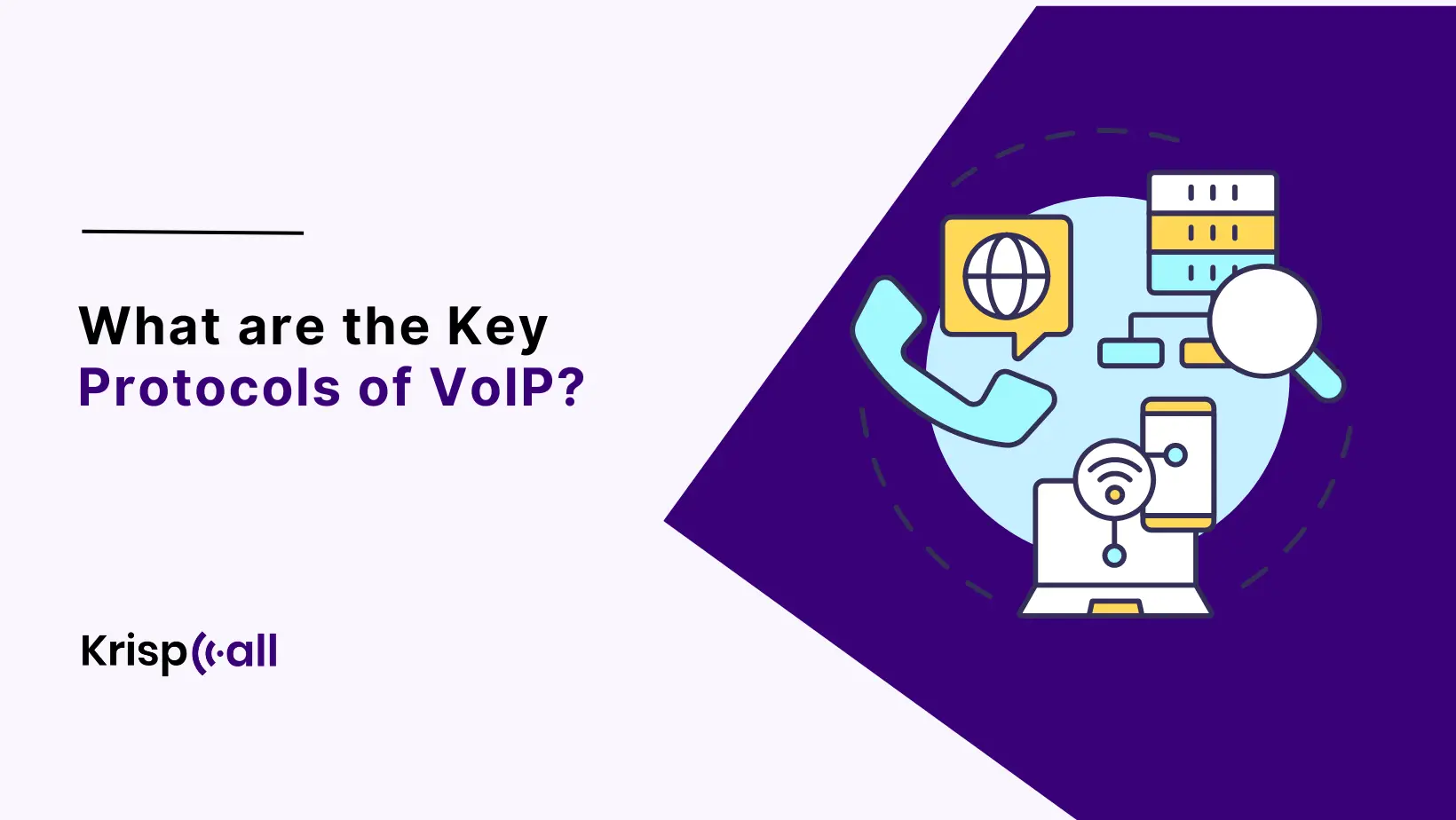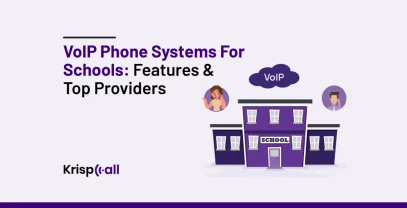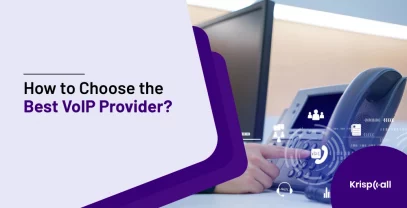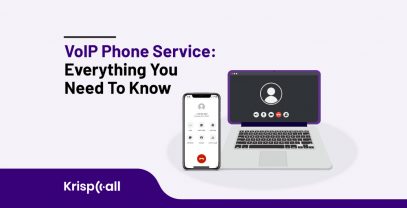VoIP is the best modern telecommunication solution for configuring and troubleshooting network infrastructure in this digital age. You have reached the right destination if you are still facing complexities in implementing different VoIP Protocols to ensure compatibility.
Here, we will give detailed information on VoIP📞 and its key protocols. Understanding the key protocols of VoIP is necessary for every IT Professional, Network Engineer, Software Developer, and System Administrator.
So, if you are one of them, this blog is especially for you. We will give you all the information about each VoIP protocol and its importance in the business. Let’s get started right away!
🔑 Key Highlights
- We have listed the key protocols of VoIP according to their compatibility, reliability, scalability, security, etc.
- Session Initiation Protocol, or SIP, is mainly responsible for initiating, modifying, and terminating communication sessions over IP networks.
- Media Gateway Control Protocol is essential for managing setup, teardown, and routing of voice and multimedia traffic between PSTN and IP networks.
- The versatility and interoperability feature of the H.323 protocol makes it a robust solution for implementing VoIP services.
- Session Description Protocol helps to negotiate session parameters and ensure compatibility across different VoIP systems and devices.
What is a VoIP Protocol?
VoIP Protocol is a set of standards and procedures that allow hardware and software devices to communicate with one another or make voice calls through the Internet. These protocols define how the voice and video data are encoded, decoded, and transported.

VoIP Protocol defines how communication sessions are initiated and maintained between devices. It plays a vital role in facilitating voice-over IP network communication and supports various features like call setup, call transfer, call forwarding, and conference calling.
Moreover, VoIP Protocols also support advanced features like QoS Management, Encryption, Authentication, and Network Address Translation (NAT). These protocols are necessary for businesses and consumers because they are the backbone of modern telecommunication and provide cost-effective and feature-rich communication solutions.
Why are the VoIP Protocols Important?
VoIP Protocols are necessary elements for proper voice telecommunication over the Internet. There are many essential points of it. Some of them are as follows:
1. To Maintain Quality Of Service (QoS)
VoIP Protocols are essential because they help maintain the quality of service, including voice and multimedia communication. Moreover, they facilitate transmission and efficient packetization, minimizing delay, jitter, and packet loss.
VoIP Protocols help manage network resources by allocating bandwidth, adjusting packet transmission rates, and optimizing network paths. They ensure that voice calls receive the resources needed for optimal performance.
2. To Interoperate between VoIP Devices
Interoperability is another vital aspect of VoIP protocol. This process enables the integration of various communication services, such as voice calling, instant messaging, and video conferencing. It allows users to access multi-channel single-interface communication, thus enhancing productivity and collaboration.
Interoperability between VoIP devices is essential for creating a cost-effective communication solution with flexibility and scalability features. It supports these 2 features, allowing businesses to grow and evolve according to their needs.
3. To enable cross-device functionality
VoIP Protocols help enable communication access to various devices, such as laptops, tablets, IP phones, and desktop computers. They facilitate a unified communication platform integrating voice calling, file sharing, instant messaging, and video conferencing.
The portability between the VoIP devices allows users to customize and personalize their communication experience with features like call forwarding, voicemail to email transcription and simultaneous ringing.
4. Supports Multi-Tasking
VoIP Protocol allows users to perform multiple tasks simultaneously without interrupting one another and enables efficient network resource use. Users can make voice calls, send instant messages, transfer files, and conduct video conferences simultaneously.
It helps users properly utilize their time and workload for better time management and productivity. It offers flexibility in communication and accommodates diverse needs and preferences.
5. Greater Accessibility
VoIP Protocols are essential because they provide greater accessibility to connecting worldwide and communicating with anyone with an active internet connection. They facilitate remote workers’ participation in virtual meetings, huddle rooms, and collaboration and communication with team members, clients, and managers.
It promotes flexibility for the workers and offers cost-effective communication, whereas traditional phone services are a bit expensive.
What are the Key Protocols of VoIP?
VoIP’s key protocols are essential for enabling voice transmission, video, and other multimedia data over IP networks.
Some of them are listed and explained below:
1. Session Initiation Protocol
Session Initiation Protocol, or SIP, is a network protocol mainly used for initiating and maintaining communication sessions. Integrating the SIP Protocol can help businesses handle call transfer, call setup, and multimedia session control tasks.
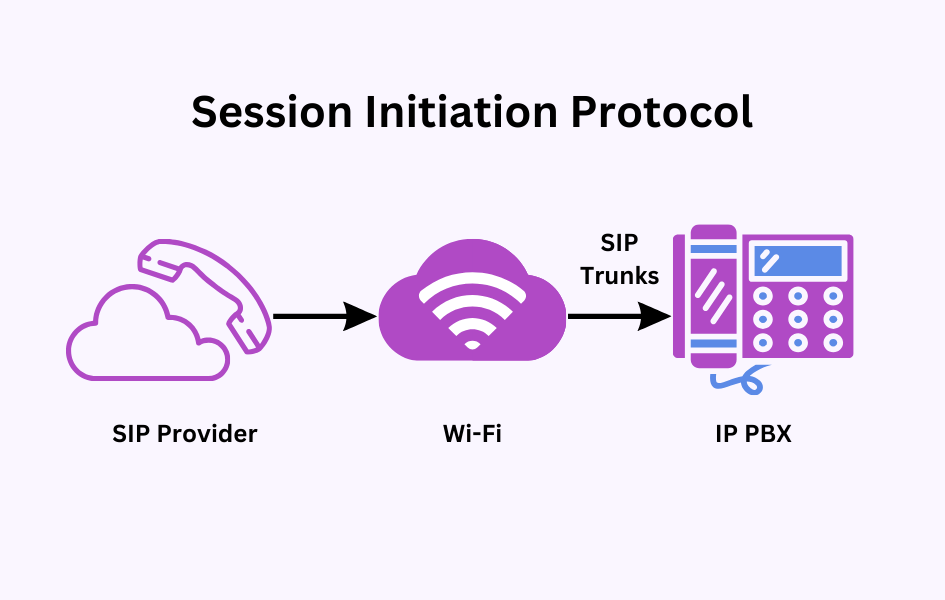
This protocol enables SIP Trunking to manage two-way virtual communication by exchanging messages and making and receiving voice calls.
2. Media Gateway Control Protocol
Media Gateway Control Protocol is another key VoIP protocol that links SIP servers and media gateways and facilitates communication between call control elements.
It controls media gateways between PSTN and IP networks, which helps streamline call routing. MGCP also controls teardown, call setup, media stream handling, and digit manipulation.
3. Real-Time Transport Protocol
Real-Time Transport Protocol is a vital VoIP protocol for transmitting audio and video data over IP networks. Some key aspects of RTP are packetization, transmission, sequence numbering, and header extension.
RTP facilitates packet reordering and loss recovery by assigning a sequence number that helps the receiver detect and recover from packet loss or out-of-order delivery. It ensures timely delivery of data packets with minimal delay.
4. H.323 Protocol
H.323 is another crucial VoIP protocol developed by the ITU-T for multimedia communication and includes protocols for call signaling, media transport, and control, enabling interoperability between different VoIP systems.
H.323 Protocol is a comprehensive set of protocols that manages call signaling through H.225 and controls signaling using H.245 and media transport through Real-Time Transport Protocol or RTP.
5. Session Description Protocol
Session Description Protocol, or SDP, is a key protocol used for various purposes, such as announcing, inviting, and negotiating session parameters.
SDP Protocols enable voice, video, and other multimedia data transmission over IP networks. They provide a standardized format for describing session characteristics such as VoIP codecs, network addresses, and media types.
6. Real-Time Transport Control Protocol
Real-time Transport Control Protocol (RTCP) is another key protocol that works alongside RTP. It provides feedback on multimedia stream quality. It reports metrics like packet loss and jitter, which allows monitoring for media transmission optimization.
It offers control functions for quality monitoring and feedback mechanisms. Its main goal is to provide control and feedback mechanisms to ensure the quality and reliability of the media stream.
Conclusion
The VoIP key protocols form the foundation of modern telecommunications, enabling efficient, reliable, and feature-rich communication over IP networks. They are essential building blocks allowing seamless voice transmission, video, and multimedia data over IP networks.
The protocols mentioned above are necessary for facilitating communication and ensuring QoS. They empower businesses and individuals to connect and communicate effectively, shaping the future of telecommunication with innovation and reliability. These protocols drive innovation and transform how we communicate, collaborate, and connect with the world.
Lastly, choosing a cloud telephony system like KrispCall can ensure the best VoIP calls and take advantage of advanced VoIP features and services at just $15 per month per user. So, what are you waiting for? Book a free demo to see if it meets your needs.
FAQs
1. What are the uses of VoIP Protocols?
The uses of VoIP Protocols are as follows:
a. It helps to initiate, manage, and end communication sessions with call setup and teardown process.
b. It helps to prioritize voice traffic and manage network resources through quality service management.
2. How do VoIP Protocols ensure security?
Using techniques such as Secure Real-Time Transport Protocol and Transport Layer Security, VoIP protocols encrypt voice data and use authentication mechanisms to prevent eavesdropping and unauthorized access.
3. Which devices are supported by VoIP Protocols?
VoIP protocols support softphones, IP Phones, PBX Systems, and VoIP Gateways.

